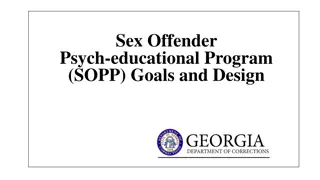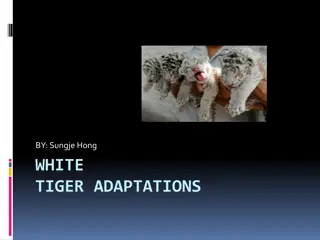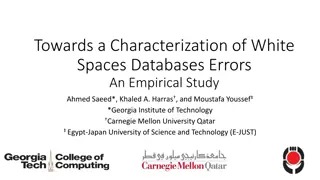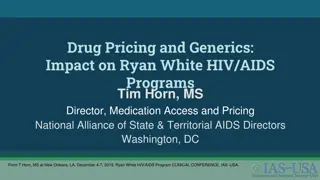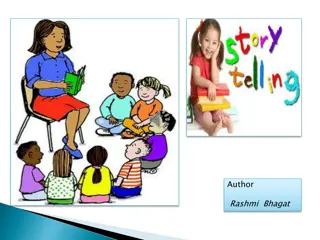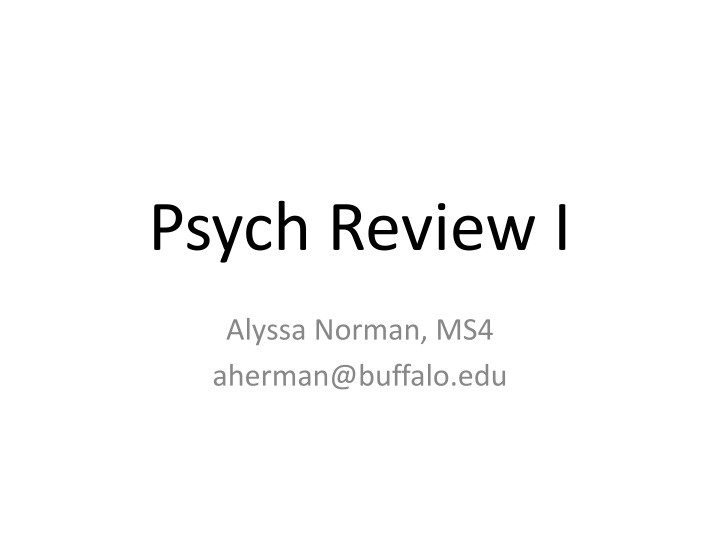
Mental Status Exam in Psychiatric Assessment
Explore the components of the Mental Status Exam including appearance, mood, thought form, cognition, insight, and judgment. Learn about assessing affect, thought organization, and abnormalities like neologisms and perseveration. Enhance your knowledge of evaluating emotional expression, thought processes, and abnormalities in psychiatric patients.
Download Presentation

Please find below an Image/Link to download the presentation.
The content on the website is provided AS IS for your information and personal use only. It may not be sold, licensed, or shared on other websites without obtaining consent from the author. If you encounter any issues during the download, it is possible that the publisher has removed the file from their server.
You are allowed to download the files provided on this website for personal or commercial use, subject to the condition that they are used lawfully. All files are the property of their respective owners.
The content on the website is provided AS IS for your information and personal use only. It may not be sold, licensed, or shared on other websites without obtaining consent from the author.
E N D
Presentation Transcript
Psych Review I Alyssa Norman, MS4 aherman@buffalo.edu
Goals Brief overview of material covered thus far Highlight important, exam-relevant material Provide a space for questions and discussion These reviews should help guide your studying!
Topics Mental Status Exam Psychosis and Psychotic Disorders Schizophrenia Antipsychotics Intoxication/Withdrawal
Mental Status Exam Appearance age, hygiene, physical characteristics, dress Attitude/Activity cooperativity, eye contact, calm/irritable, behaviors Mood predominant internal emotional state, quoted from the patient Affect expression of that emotional state, as observed by the clinician Speech volume, rate, spontaneity, articulation, semantics Thought Form thought organization Thought Content thought substance Perception illusions, hallucinations, depersonalization, autoscopy, d j vu, jamais vu Cognition AOx3, concentration, registration, short/long-term memory, construction, abstraction Insight patient s understanding of their illness, behavior, and benefits of treatment Judgment consideration before action
Mental Status Exam Affect emotional expression as observed by the clinician Congruency with stated mood Appropriateness with conversation content Intensity level of expression Blunted = minimal expression Flat = no expression Range emotional spectrum displayed by the patient Full or restricted Mobility fluidity/ease of movement through that spectrum Labile > Mobile > Fixed Reactivity responds appropriately to shifts in conversation content
Mental Status Exam Thought Form (Organization) Organized Circumstantial Tangential Flight of Ideas Loosening of Associations Word Salad
Mental Status Exam Other abnormalities of thought form Neologisms Clanging Echolalia Thought blocking Perseveration
Mental Status Exam Thought Content types of ideas expressed by patient Delusions: fixed false beliefs not shared by peer group Bizarre Non-bizarre Overvalued ideas delusions that you can reason with Suicidal/Homicidal ideations Obsessions persistent, intrusive, ego-dystonic thoughts Preoccupations Magical thinking- superstitious thinking Ideas of reference insignificant events or remarks have some special personal meaning to the patient Poverty of speech
Psychosis Psychosis describes a distorted perception of reality characterized by: Hallucinations Delusions Disorganized Thought/Speech Disorganized behavior REMEMBER: Psychosis is a symptom, not a diagnosis
Schizophrenia Chronic or recurrent disorder characterized by: Sustained periods of psychosis, positive symptoms (~1 month) Negative symptoms Long-term deterioration in functional ability Symptom duration of at least 6 months
Schizophrenia Positive Symptoms Delusions Hallucinations Thought/speech disorganization Disorganized behavior Catatonia Negative Symptoms Blunted affect Anhedonia/Asociality Alogia Inattention Avolition/Apathy Dopamine in mesocortical tract Occurs early (prodrome), progressive Impairs function Does not respond as well to antipsychotics Dopamine in mesolimbic tract Occurs late, waxing/waning Hospitalization Responds well to antipsychotics
Schizophrenia: DSM-V A. 2+ of the following symptoms for at least 1 month: Delusions Hallucinations Disorganized speech Grossly disorganized or catatonic behavior Negative symptoms B. Social/Occupational Dysfunction C. Overall duration of at least 6 months D. Not attributable to schizoaffective or mood disorder, substance use, general medical condition, pervasive developmental disorder Need at least one of these
Schizophrenia Cognitive Symptoms Memory Language Attention Executive Function Involves all domains Progressive Highly correlated with functional impairment Poor response to antipsychotics Mood Symptoms Depression Dysphoria Disabling/distressing Contributes to suicidality Suicide in Schizophrenia 20-50% attempt 5-6% succeed
Schizophrenia Positive Prognostic Factors Acute and/or late onset Positive symptoms Family Hx of affective disorder Supportive family Good premorbid functioning Negative Prognostic Factors Insidious and/or early onset Negative symptoms Family Hx of schizophrenia
Schizophrenia Epidemiology ~1% prevalance 1.4 men : 1 woman Starts in 20s Risk Factors Family hx Obstetric complications Infection Winter Birth Immune factors Nutritional Deficiencies Cannabis/drug use Immigration Advanced paternal age Concordance Rate Twins/both parents: 50% Siblings/one parent: ~10%
Schizophrenia Etiology 1. Dopamine Hypothesis: +symptoms due to over activity of dopamine in mesolimbic tract; psychotic symptoms can be induced by dopamine agonists 2. Neurodevelopmental Hypothesis 1. Genetic + Environmental risk 3. Neurodegenerative Hypothesis 1. Functional and structural brain abnormalities 2. Cognitive disturbances 3. Progressive nature of disease
Differential Diagnosis: Psychosis Delusional Disorder 1+ delusions for at least 1 month Functioning not impaired Disorganized speech, negative sxs not present Tx = can use any antipsychotic, but poor response to antipsychotics, SSRIs may be beneficial Brief Psychotic Disorder Psychotic symptoms >1 day but <1 month with gradual recovery to baseline Tx = brief hospitalization, self-limited, antipsychotics can be helpful with agitation/distress; f/u with psychotherapy/supportive therapy after
Differential Diagnosis: Psychosis Schizophreniform Disorder Symptoms similar to Schizophrenia Duration > 1 month, but < 6 months Tx = hospitalization, antipsychotics Most go on to diagnosis of Schizophrenia, mood disorder, or Schizoaffective Schizophrenia Symptom duration > 6 months Tx: Antipsychotics (1st or 2nd gen), ECT, hospitalization, outpatient therapy, mutli-faceted approach
Differential Diagnosis: Psychosis Schizoaffective Disorder Major mood episode + Schizophrenia sxs Mood sxs predominate Must have at least 2 weeks of delusions or hallucinations in absence of mood disorder (differentiates from mood disorder w/ psychotic features) Tx = 2nd gen antipsychotics, additional mood stabilizer or antidepressant possible, ECT for medication-resistant forms
Differential Diagnosis: Psychosis Substance/Medication Induced Psychotic Disorder Mood Disorders Neurocognitive Disorders Psychosis secondary to general medical conditions
Antipsychotics Four Dopamine (DA) Pathways 1. Mesolimbic DA Positive symptoms 2. Mesocortical DA Negative symptoms 3. Nigrostriatial DA competes with Ach in basal ganglia 4. Tuberoinfundibular DA inhibits prolactin release
Antipsychotics - Typicals Typical Antipsychotics (Conventional, First Generation) Mechanism of Action Dopamine (D2) blockade therapeutic action (as well as side effects) Muscarinic (M1) blockade anticholinergic effects Alpha1 blockade orthostatic hypotension/dizziness/drowsiness Histamine (H1) blockade drowsiness, weight gain
Antipsychotics - Typicals Four Dopamine (DA) Pathways 1. Mesolimbic DA Positive symptoms Universal D2 Blockade DA positive sxs 2. Mesocortical DA Negative symptoms DA negative sxs 3. Nigrostriatial DA competes with Ach in basal ganglia DA Ach EPS 4. Tuberoinfundibular DA inhibits prolactin release DA Prolactin galactorrhea/amenorrhea
Extrapyramidal Symptoms (EPS) Parkinsonism bradykinesia, masklike facies, cogwheeling, pill-rolling tremor Tx = anticholinergics (benztropine, trihexyphenidyl, diphenhydramine) Akathisia unpleasant urge to move Tx = propranolol Dystonia painful, involuntary muscle spasms (usually of head or neck) Tx = anticholinergics (benztropine, diphenhydramine) Tardive Dyskinesia involuntary movements of face/neck/extremities (chewing, tongue protrusion, grimacing) Prolonged antipsychotic use Often irreversible; switch to lower risk antipsychotic
Neuroleptic Malignant Syndrome (NMS) Muscle rigidity, fever, autonomic instability, CPK Immediately STOP antipsychotic (potentially fatal) Tx = supportive (cooling), dantrolene (inhibits calcium release from SR and allows muscles to relax), dopamine agonists
Antipsychotics Low Potency Typicals (lower D2 affinity) Chlopromazine dose needed anticholingeric effects Ach EPS Predominate side effects: anticholinergic, drowsiness, orthostatic hypotension High Potency Typicals (higher D2 affinity) Haloperidol, Fluphenazine, Trifluoperazine dose needed anticholinergic effects Ach EPS EPS symptoms predominate, hyperprolactinemia Overall: improve positive sxs, worsen negative sxs, cause EPS, anticholinergic, drowsiness, orthostasis
Antipsychotics - Atypicals Atypical Antipsychotics (2nd Generation) Mechanism of action Dopamine (D2) blockade Serotonin (5-HT2A) blockade Serotonin inhibits DA 5-HT2A DA (essentially counteracting the DA blockade) 5-HT2A receptor levels very in different brain regions Mesolimbic low levels Mesocortical, Nigrostriatial, Tuberoinfundibular high levels What does this mean? There is a selective D2 blockade in the mesolimbic tract
Antipsychotics - Atypicals 5-HT2A and D2 Blockade Four Dopamine (DA) Pathways Mesolimbic (few 5-HT2A receptors) DA Positive symptoms DA positive sxs Mesocortical (many 5-HT2A receptors) DA Negative symptoms 5-HT DA negative sxs Nigrostriatial (many 5-HT2A receptors) DA competes with Ach in basal ganglia 5-HT DA Ach EPS Tuberoinfundibular (many 5-HT2A receptors) DA inhibits prolactin release 5-HT DA Prolactin galactorrhea/amenorrhea
Antipsychotics - Atypicals Risperidone - hyperprolactinemia (most similar to typicals) Olanzapine - weight gain Quetiapine - sedation Ziprasidone - weight gain, QTc Aripiprazole (D2 partial agonist) - akathisia Clozapine agranulocytosis (needs frequent blood work) Only antipsychotic with efficacy Reduces risk of suicide No EPS, TD or prolactinemia Use in cases of 2x failed tx
Antipsychotics All Atypicals weight Metabolic syndrome risk Varying degree of anticholingergic symptoms, sedation, orthostasis All Antipsychotics seizure threshold
Intoxication & Withdrawal Substance Use Disorder problematic pattern of substance use leading to significant impairment or distress over 12 month period involving: Impaired Control can t cut down, taking more than intended Social Impairment not fulfilling obligations, giving up important activities Risky Use ignoring hazardous purchasing conditions or physical effects Pharmacologic Dependence tolerance, withdrawal if stop using
Intoxication & Withdrawal Dissociative Anesthetics Stimulants Sedatives Hallucinogens Cannabinoids Cocaine Alcohol LSD PCP Marijuana Amphetamines Psilocybin Ketamine K2 Benzodiazepines Crystal Meth Barbituates Mescaline MDMA (Ecstasy) Opioids Bath Salts
Stimulants Mechanisms of Action: Cocaine reuptake of DA, NE, 5HT Smoking and injection = most addictive Also block nerve impulses causing local anesthetic effect Amphetamines reuptake, release, degradation of NE and DA Ecstasy amphetamine MoA + release of 5HT CrystalMeth fat solubility BBB penetration more addictive Bath Salts effect is similar to amphetamiens
Stimulants Intoxication sympathomimetic ( HR, BP, RR), mydriasis, euphoria Cocaine overdose formications, delirium, seizure, stroke, MI Ecstasy emotional openness, euphoria, afterglow Withdrawal malaise, fatigue, depression, SI, hypersomnia, miosis Symptomatic treatment Ecstasy long-term use can deplete 5HT depression
Dissociative Anesthetics PCP MoA: blocks NMDA glutamate receptors, activates DA receptors Intoxication: hallucinations, nystagmus, violence, anesthesia Overdose: fever, rhabdo, renal failure, seizure, respiratory depression, death Treatment: isolate, benzos, urine acidification (NOT antipsychotics can worsen psychosis) Ketamine Hallucinations, dissociation, profound respiratory depression
Hallucinogens LSD, Psilocybin, Mescaline MoA 5HT receptor agonist Intoxication visual distortions, intense emotions, mydriasis, tachycardia, altered sense of time/space Hallucinogen Persisting Perception ( Bad Trip ) acute anxiety reaction Tx reassurance and wait, +/- benzos, antipsychotics last resort Flashbacks can occur in times of fatigue/stress or while using other drugs Duration LSD, mescaline: 6-10 hrs Psilocybin 2-4 hrs
Cannabinoids Marijuana (Cannabis) MoA THC binds endogenous cannabinoid receptors Intoxication euphoria, relaxation, conjunctival injection, paranoia, increased appetite Withdrawal irritability, restlessness, anxiety, depressed mood, abdominal pain K2 (Spice) Synthetic cannabinoid, 10x more affinity for receptor than THC More severe sxs hallucinations, thought disorganization, aggression
Sedatives Alcohol, Benzodiazepines, Barbituates MoA potentiates the effects of GABA (CNS depressant) Intoxication incoordination, slurred speech, nystagmus, coma Benzo overdose flumazenil Withdrawal LIFE THREATENING!!!! Autonomic hyperactivity, tremor, seizures, DTs (day 2- 3) Tx frequent vitals, benzo taper, carbamazepine
Sedatives Opioids Heroin, Methadone, Buprenorphine, Naloxone, Naltrexone MoA bind opioid receptors (full and partial agonists, antagonists), most importantly the Mu receptors Intoxication euphoria, analgesia, respiratory depression, miosis, constipation Overdose can be fatal treat with naloxone (antagonist) Withdrawal dysphoria, nausea/vomting, diarrhea, lacrimation, rhinorrhea, yawing, mydriasis Treatments for dependence Methadone, Suboxone (buprenorphine/naloxone) detox and maintenance Naltrexone maintenance only













